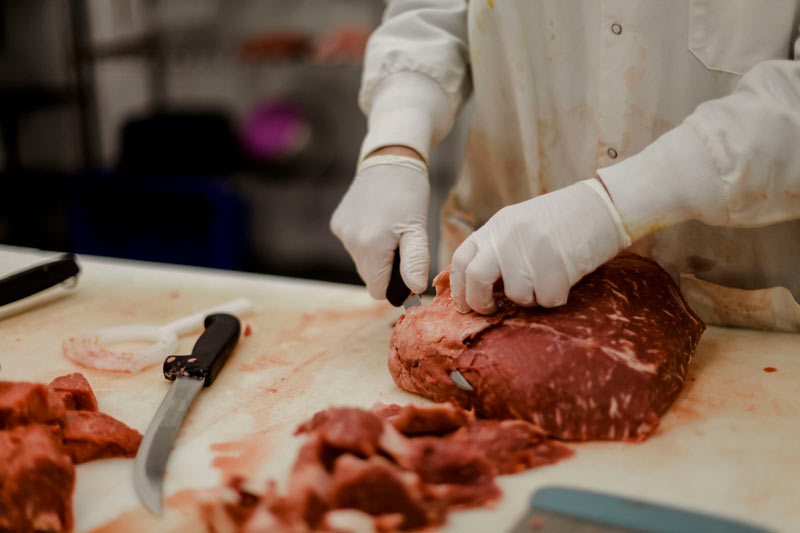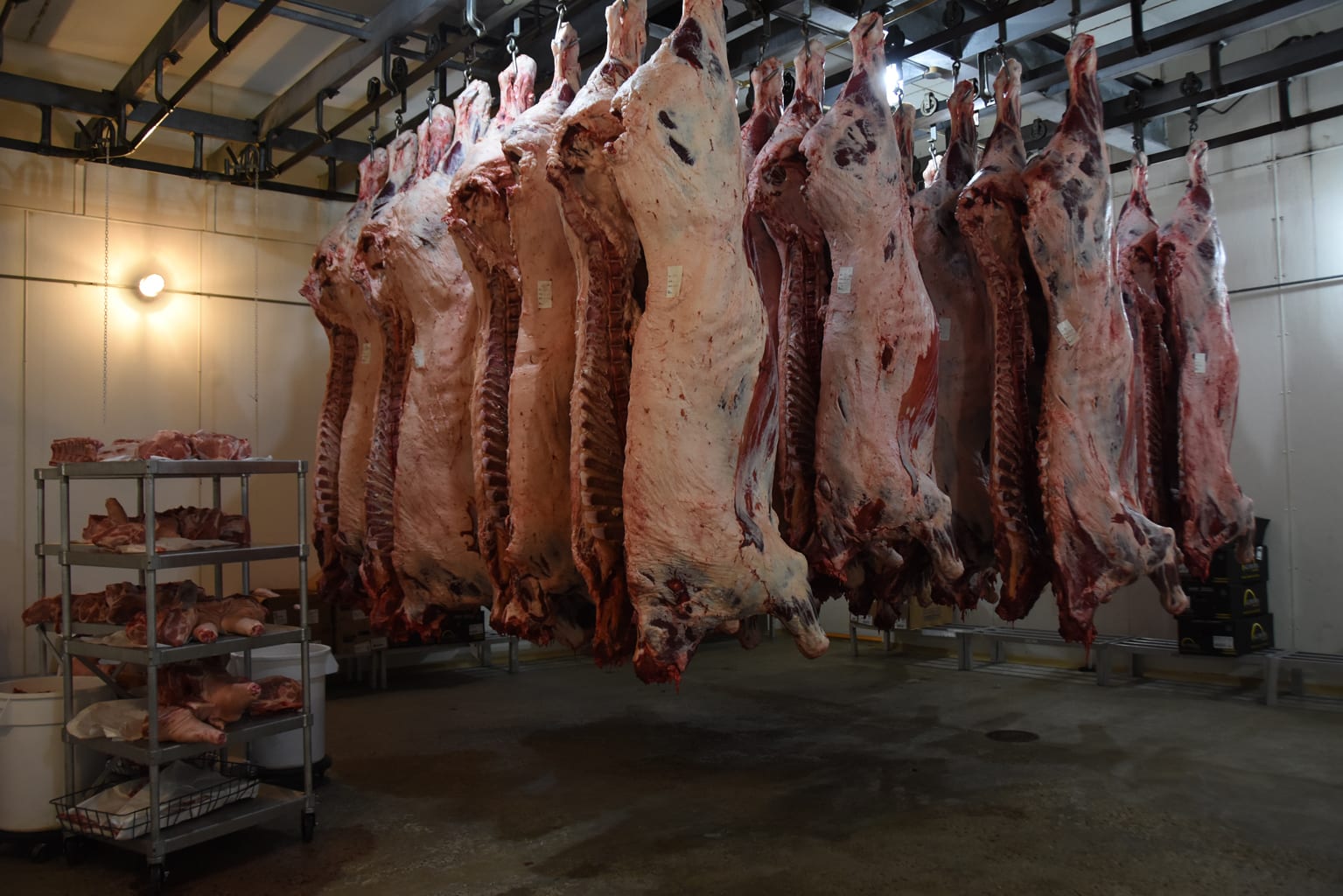Bagley Farms Meat Market Edwardsville IL: Your Go-To Location for Regional Meat Selection
Bagley Farms Meat Market Edwardsville IL: Your Go-To Location for Regional Meat Selection
Blog Article
Discover the Art of the Butcher's Cut in a Modern Meat Market
In the ever-evolving landscape of contemporary meat markets, the butcher's cut has transcended its typical roots, combining old-time workmanship with contemporary practices. What really sets the contemporary butcher apart is their capability to create a much deeper link in between customers and the origins of their meat.
Development of Butchery Methods

The mid-20th century saw butchery methods even more improved by scientific insights into muscular tissue biology and meat aging, improving both tenderness and taste. Technologies like vacuum cleaner product packaging and refrigeration extended product shelf-life, permitting butchers to diversify offerings and enhance high quality control. This duration also marked the increase of specific tools, such as band saws and meat slicers, which enhanced precision and performance in meat handling.
The 21st century has introduced electronic innovation into the butchery world. Electronic systems now assist in tracking pet provenance and enhancing cuts to meet details consumer preferences. Additionally, a resurgence in artisanal butchery has actually emerged, blending typical abilities with contemporary knowledge to accommodate customers seeking honest and sustainable meat options. This advancement emphasizes a vibrant interaction between tradition and development, meeting modern needs while preserving the craft's heritage.

Understanding Meat Cuts

Comprehending the ins and outs of meat cuts is crucial for both butchers and customers looking for quality and worth. Each cut comes from a different part of the animal, presenting special flavors, appearances, and cooking approaches. Mastery of these distinctions not just boosts culinary experiences but also makes best use of the energy of each carcass. For butchers, exact cuts show skill and regard for the craft, making sure very little waste and optimum return.
The primary categories of meat cuts include primitive, sub-primal, and retail cuts. Primitive cuts, such as the loin, rib, and chuck, are the large sections originally divided from the carcass. Butchers then damage these down further into sub-primal cuts, prior to lastly generating retail cuts available to consumers, like ribeye or tenderloin. Each stage needs cautious focus to physiological structure and muscle mass structure.
Recognizing muscular tissue composition is crucial; muscles made use of a lot more frequently by the pet have a tendency to be harder and are best matched for slow food preparation methods, while less-used muscular tissues, like those located in the loin, are a lot more tender and suitable for barbecuing or roasting. Experience with these differences encourages consumers to make educated options, enhancing their culinary ventures.
Selecting Quality Meat
Choosing the right meat includes even more than simply picking a visually attractive item from the display screen. The art of picking high quality meat try this site needs a critical eye and knowledge of particular characteristics that symbolize quality and quality.
Secondly, consider the marbling, which refers to the white flecks of fat within the muscle mass. Proper marbling is a crucial sign of inflammation and flavor, as it melts during cooking, enhancing the meat's juiciness. Remember, higher marbling commonly correlates with exceptional high quality cuts, such as USDA Prime.
Texture is one more crucial variable; meat ought to really feel firm to the touch, not slimed or overly soft. In addition, be mindful of the aroma. Fresh meat ought to have a clean, neutral odor, devoid of any kind of sour or off-putting smells.
Matching Cuts With Food Preparation Methods
Efficiently pairing cuts of meat with the ideal cooking techniques is essential for accomplishing optimum flavor and appearance. These techniques enhance the meat's all-natural flavors and make certain a juicy surface.
Alternatively, tougher cuts like brisket and chuck roast are rich in collagen, which damages down right into gelatin when prepared slowly. These cuts are optimal for braising or slow-moving roasting, permitting the meat to tenderize in time and establish deep, intricate tastes. Similarly, cuts such as short ribs and pork shoulder get on well with slow-cooking techniques, where prolonged cooking times change their durable appearances right into delicious dishes.
Lamb shanks and oxtail, which require extended cooking to soften, are best prospects for stewing or slow simmering. These methods coax out rich, hearty flavors while maintaining moisture. By comprehending the special attributes of each cut, cooks and home chefs alike can raise their culinary creations, guaranteeing each dish is both satisfying and remarkable.
The Butcher's Duty Today
Browsing the progressing landscape of the contemporary meat market, the butcher's role today expands past simple preparation of cuts. Contemporary butchers are culinary craftsmens, why not try this out teachers, and advocates for sustainable techniques. They bridge the space in between the ranch and the fork by making sure ethical sourcing, recognizing animal husbandry, and focusing on transparency in the supply chain. This change shows the expanding consumer need for top quality over quantity, where provenance and pet welfare are extremely important.
Along with crafting precise cuts, butchers now involve directly with clients, supplying cooking guidance and customizing selections to fit specific needs and choices. Their know-how in meat aging, marbling, and taste profiles equips customers to make informed decisions, boosting their culinary experiences. This tailored service exhibits the butcher's evolving function as a trusted consultant in the cooking area.
Furthermore, butchers are crucial in minimizing her comment is here waste, using entire pets to create diverse items such as sausages and supplies - bagley farms meat market edwardsville il. This extensive strategy not only values the animal however also lines up with modern sustainability goals. This way, the modern-day butcher personifies both tradition and development, adapting to an ever-changing market while protecting the creativity and integrity of their craft

Verdict
The modern butcher's craft delicately weaves standard methods with modern innovations, emphasizing lasting methods and ethical sourcing. Proficiency in recognizing varied meat cuts and quality indicators encourages butchers to give educated recommendations, straightening certain cuts with ideal cooking approaches. This experience not just elevates cooking experiences however also strengthens the link between consumers and the origins of their food. By honoring historic methods while welcoming contemporary needs, the butcher's function stays important in today's sophisticated meat market.
Report this page